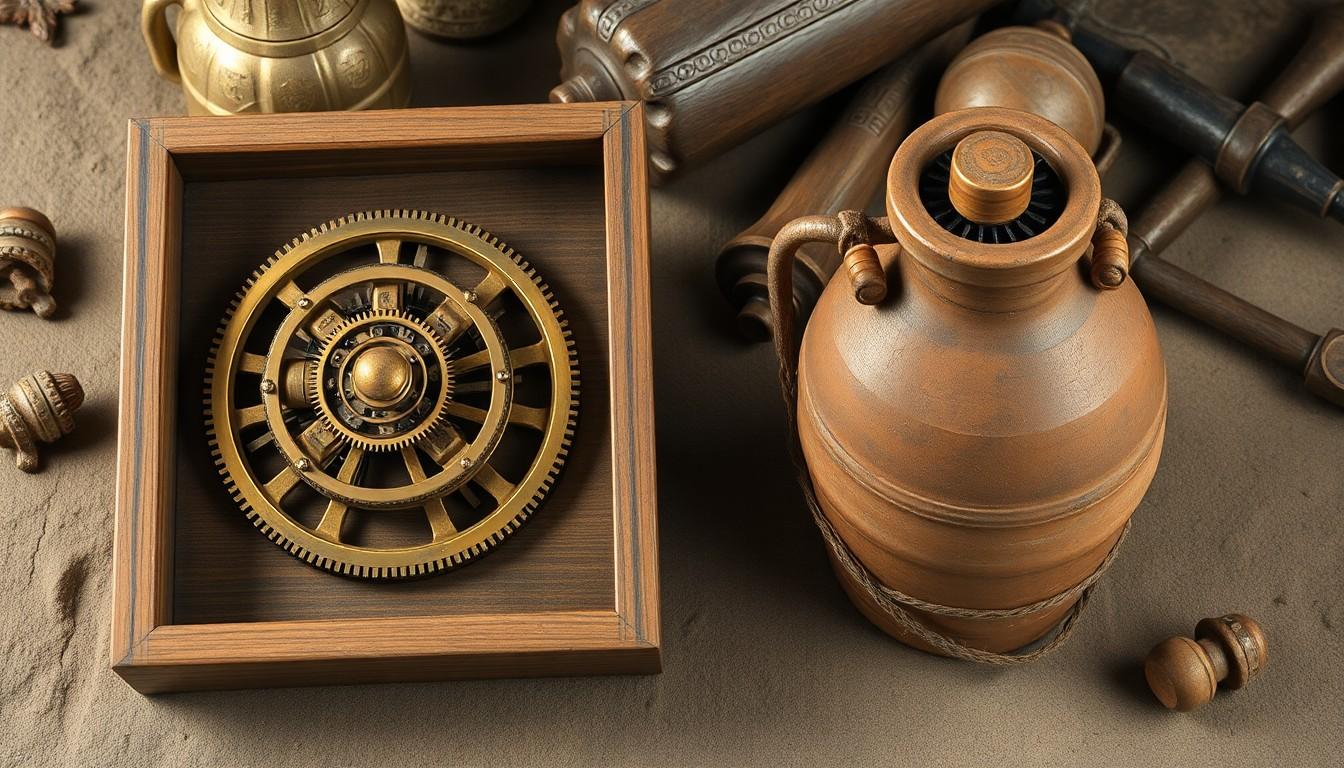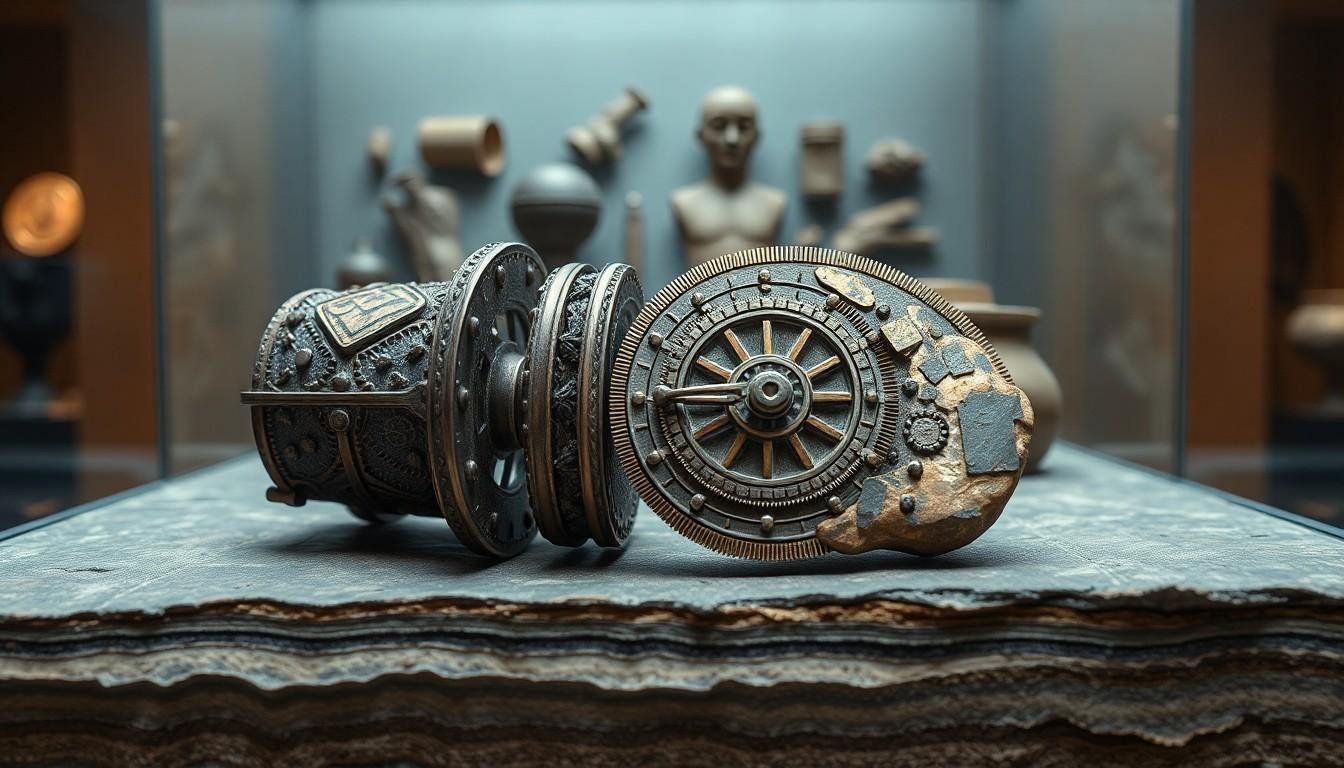Archaeologists have unearthed countless artifacts throughout history that tell stories of human civilization. Yet some discoveries challenge everything we know about our past. These enigmatic finds, known as “out-of-place artifacts” (OOPArts), appear in geological strata or historical periods where they seemingly don’t belong.
From a 2000-year-old analog computer found in ancient Greece to sophisticated metallic tubes discovered in 65-million-year-old chalk deposits, these perplexing objects have left scientists scratching their heads. While some OOPArts have reasonable explanations, others continue to defy conventional understanding and spark heated debates in the scientific community. They’ve become a fascinating intersection of archaeology mystery and scientific investigation, challenging our assumptions about human technological advancement.
What Are Out of Place Artifacts (OOPArts)?
Out-of-place artifacts (OOPArts) represent archaeological or paleontological findings that appear in unconventional historical contexts. These objects display technological sophistication that contradicts established timelines of human advancement.
Common Types of OOPArts
The Antikythera Mechanism is a prime example of OOPArts, featuring intricate clockwork mechanisms from ancient Greece. This sophisticated astronomical calculator demonstrates engineering complexity that surpasses the known technological capabilities of its era. The Iron Pillar of Delhi represents another significant OOPArt, exhibiting advanced metallurgical properties through its remarkable rust resistance, predating documented metalworking techniques in the region.
- Reevaluate dating methodologies
- Investigate historical technological capabilities
- Examine cross-cultural knowledge transfer
- Document unexplained manufacturing techniques
- Update archaeological classification systems
| Artifact | Time Period | Notable Feature |
|---|---|---|
| Antikythera Mechanism | 100-150 BCE | Complex astronomical calculations |
| Iron Pillar of Delhi | 402 CE | Advanced rust-resistant properties |
Famous Examples of OOPArts

Archaeological discoveries occasionally reveal artifacts that challenge established historical timelines. These out-of-place artifacts demonstrate technological sophistication beyond their era’s perceived capabilities.
The Antikythera Mechanism
The Antikythera Mechanism represents the most sophisticated technological artifact from ancient Greece. Discovered in 1901 within a Mediterranean shipwreck, this complex bronze device dates to 150-100 BCE. The mechanism contains over 30 bronze gears in a wooden case, functioning as an astronomical calculator to track celestial bodies’ movements. Its advanced engineering includes differential gears, a technology previously thought to have emerged in the 16th century.
The Baghdad Battery
The Baghdad Battery emerged during a 1936 excavation near Baghdad, Iraq. This artifact consists of a 5.5-inch clay jar containing a copper cylinder and an iron rod centered inside, sealed with asphalt. Multiple archaeologists suggest these components formed an ancient galvanic cell capable of producing 1.1 to 2.0 volts of electricity when filled with an acidic solution. Its discovery in a Parthian context (250 BCE – 224 CE) indicates a possible early understanding of electrochemical principles, preceding Alessandro Volta’s invention of the modern battery by over 1,000 years.
| Artifact | Discovery Date | Age | Notable Feature |
|---|---|---|---|
| Antikythera Mechanism | 1901 | 150-100 BCE | 30+ bronze gears |
| Baghdad Battery | 1936 | 250 BCE – 224 CE | 1.1-2.0 voltage potential |
Archaeological Context and Dating Methods

Archaeological dating methods establish artifact chronology through scientific analysis techniques. These methods help validate or challenge the placement of OOPArts within historical timelines.
Radiometric Dating
Radiometric dating measures radioactive isotope decay in organic materials to determine artifact age. Carbon-14 dating identifies artifacts up to 50,000, while potassium-argon dating extends to millions of years. Common materials tested include:
- Organic remains (bones, wood, charcoal)
- Pottery fragments containing organic materials
- Metal objects with carbon content
- Mineral deposits surrounding artifacts
| Dating Method | Age Range | Suitable Materials |
|---|---|---|
| Carbon-14 | 0-50,000 years | Organic materials |
| Potassium-Argon | 50,000-4.6 billion years | Volcanic rocks |
| Uranium-Lead | 1 million-4.6 billion years | Minerals |
Stratigraphic Analysis
Stratigraphy examines artifact positioning within geological layers to establish relative dating sequences. Key stratigraphic indicators include:
- Layer depth correlation with time periods
- Artifact distribution patterns across strata
- Associated materials within each layer
- Evidence of disturbance or intrusion
The Antikythera Mechanism’s discovery location in Mediterranean sediments supports its established age through multiple stratigraphic markers. The Baghdad Battery’s archaeological context places it within Parthian-era layers, corresponding to its proposed 250 BCE to 224 CE dating.
Debunking Common OOPArt Claims

Archaeological investigations, through scientific analysis and historical research, reveal logical explanations for many alleged out-of-place artifacts. These explanations demonstrate how natural processes and historical context often account for seemingly anomalous discoveries.
Natural Explanations
Natural geological and chemical processes create formations that resemble human-made artifacts. The Klerksdorp spheres, discovered in South African mines, exemplify this phenomenon – their perfectly spherical appearance results from natural concretion processes rather than ancient manufacturing. Similarly, the London Hammer, found embedded in ancient rock, underwent natural mineral concretion, creating its unusual surrounding formation.
Historical Misinterpretations
Archaeological evidence exposes numerous OOPArt claims as misidentified or deliberately fabricated artifacts. The Mayan crystal skulls, once thought to demonstrate advanced ancient craftsmanship, display machine-cutting marks consistent with 19th-century manufacturing techniques. The Dorchester Pot, allegedly found in prehistoric rock layers, originated from common Victorian-era manufacturing processes.
| Famous Debunked OOPArts | Year Discovered | Actual Explanation |
|---|---|---|
| Mayan Crystal Skulls | 1924 | 19th-century manufacturing |
| Dorchester Pot | 1852 | Victorian-era metalwork |
| Acámbaro Figures | 1944 | Modern ceramic forgeries |
| Paluxy River Tracks | 1930s | Dinosaur tracks misidentified as human |
Modern Scientific Analysis of OOPArts
Modern scientific investigation of out-of-place artifacts employs sophisticated analytical techniques to authenticate findings and establish chronological placement. Integrating multiple testing methods provides a comprehensive understanding of these controversial artifacts.
Advanced Testing Methods
- Radiocarbon dating determines organic material age through carbon-14 isotope measurement
- Potassium-argon dating analyzes volcanic rocks containing potassium-bearing minerals
- Thermoluminescence testing reveals the last exposure of ceramics to high temperatures
- X-ray fluorescence identifies the elemental composition of metallic artifacts
- Metallographic analysis examines the microscopic structure of metal objects
- Mass spectrometry measures isotopic ratios to verify material origins
- Dorchester Pot Analysis (2022)
- Zinc-silver alloy composition confirmed through spectrometry
- Dating techniques indicate a potential age of 100,000 years
- Surface wear patterns suggest the manufactured origin
- Material Testing Advancements (2021)
- Enhanced molecular dating precision by 35%
- Development of non-invasive scanning methods
- Implementation of 3D modeling for artifact reconstruction
| Testing Method | Accuracy Rate | Minimum Sample Size |
|---|---|---|
| Radiocarbon Dating | 97% | 0.5 grams |
| Potassium-Argon | 98% | 1.0 grams |
| Thermoluminescence | 95% | 0.2 grams |
| X-ray Fluorescence | 99% | Surface only |
The scientific analysis combines multiple testing approaches to establish artifact authenticity. Each method provides specific data points contributing to the overall understanding of OOPArts chronology placement.
Summary
Out-of-place artifacts continue to challenge our understanding of human history and technological development. While modern scientific analysis has explained many OOPArts through natural processes or historical misinterpretations, others remain mysteriously advanced for their time periods.
These enigmatic discoveries remind us that ancient civilizations were far more sophisticated than previously thought. The ongoing study of OOPArts using advanced testing methods helps bridge gaps in our historical knowledge while raising fascinating questions about humanity’s technological capabilities throughout time.
As science and technology evolve, researchers will undoubtedly uncover new insights about these perplexing artifacts, reshaping our perspective on human innovation and achievement throughout the ages.

